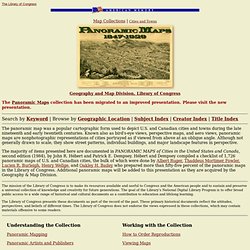

National Atlas home page. The National Map is now offering a collection of small-scale datasets that can be downloaded for free.

Although the 1997-2014 Edition of the National Atlas of the United States was retired in September 2014, The National Map recognizes the importance of continuing to make a collection of the small-scale datasets, originally developed for the National Atlas, available to users. Small-scale maps have an advantage over large-scale maps when there is a need to show a large area in a single view. This makes small-scale maps an ideal solution for scientists, decision-makers, and planners needing to provide a geographical context for the research projects. Generally, certain geographical and feature details found in large-scale maps are limited or omitted in small-scale maps. The choice of small-scale maps always comes down to the intended use of the final map. The National Map collection of 197 small-scale datasets can be downloaded at small-scale data download page . LUHNA Homepage (Land Use History of North America) Dixie-education - Social-Studies. Map Collections Home Page.
The Library of Congress Search by Keyword | Browse by Geographic Location Index | Subject Index | Creator Index | Title Index The Geography and Map Division of the Library of Congress holds more than 4.5 million items, of which Map Collections represents only a small fraction, those that have been converted to digital form.

The focus of Map Collections is Americana and Cartographic Treasures of the Library of Congress. These images were created from maps and atlases and, in general, are restricted to items that are not covered by copyright protection. Map Collections is organized according to seven major categories. Searching Map Collections The mission of the Library of Congress is to make its resources available and useful to Congress and the American people and to sustain and preserve a universal collection of knowledge and creativity for future generations. The Library of Congress presents these documents as part of the record of the past. Special Presentations: Places in History. Panoramic Maps Collection. The Library of Congress Map Collections | Cities and Towns Geography and Map Division, Library of Congress The Panoramic Maps collection has been migrated to an improved presentation.

Please visit the new presentation. Search by Keyword | Browse by Geographic Location | Subject Index | Creator Index | Title Index The panoramic map was a popular cartographic form used to depict U.S. and Canadian cities and towns during the late nineteenth and early twentieth centuries. The majority of items presented here are documented in PANORAMIC MAPS of Cities in the United States and Canada, second edition (1984), by John R. The mission of the Library of Congress is to make its resources available and useful to Congress and the American people and to sustain and preserve a universal collection of knowledge and creativity for future generations. The Library of Congress presents these documents as part of the record of the past. American Memory | Search All Collections | Collection Finder | Teachers. Railroad Maps Collection. The Library of Congress Map Collections | Transportation and Communication Geography and Map Division, Library of Congress The Railroad Maps 1828 to 1900 collection has been migrated to an improved presentation.

Please visit the new presentation. Search by Keyword | Browse by Geographic Location | Subject Index | Creator Index | Title Index | Railroad Lines The Railroad maps represent an important historical record, illustrating the growth of travel and settlement as well as the development of industry and agriculture in the United States. All of the items presented here are documented in RAILROAD MAPS of the United States compiled by Andrew M. The mission of the Library of Congress is to make its resources available and useful to Congress and the American people and to sustain and preserve a universal collection of knowledge and creativity for future generations.